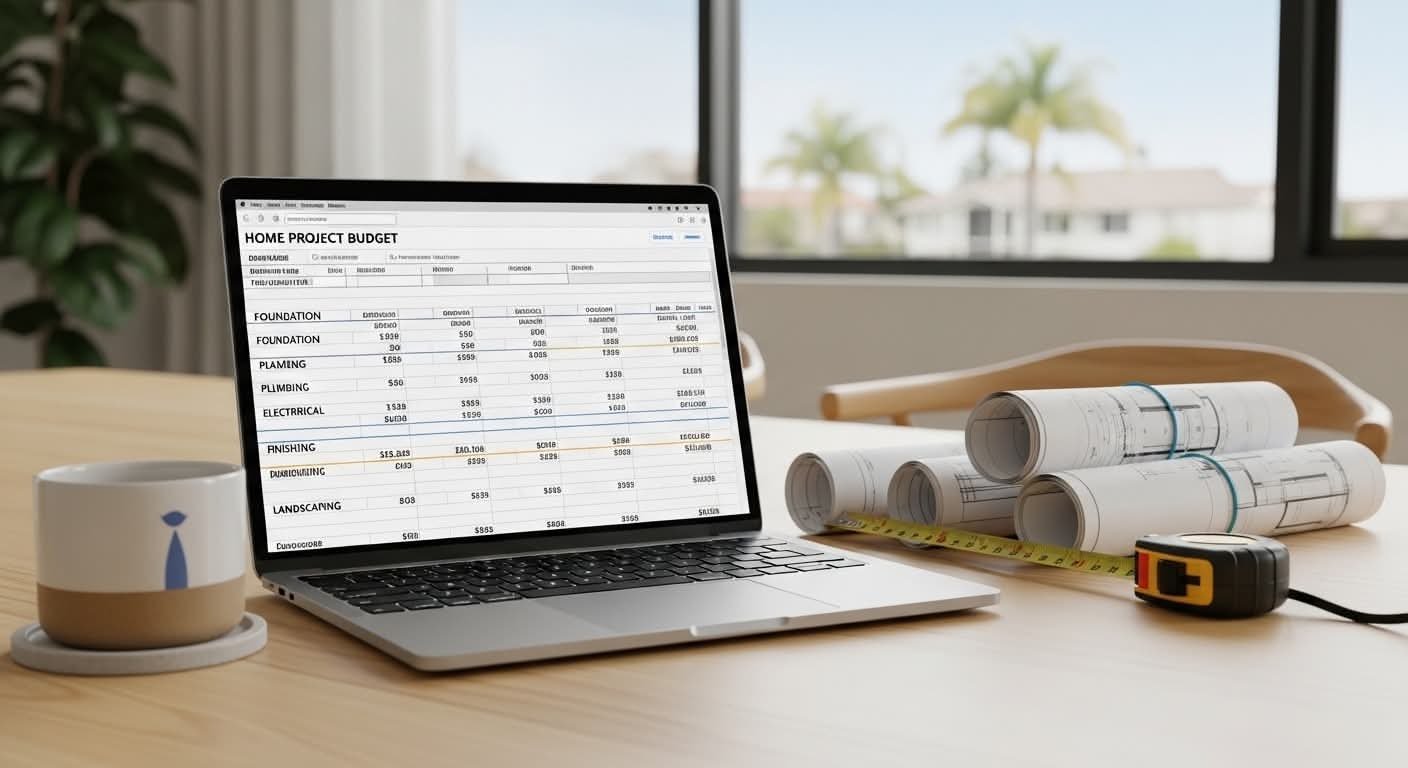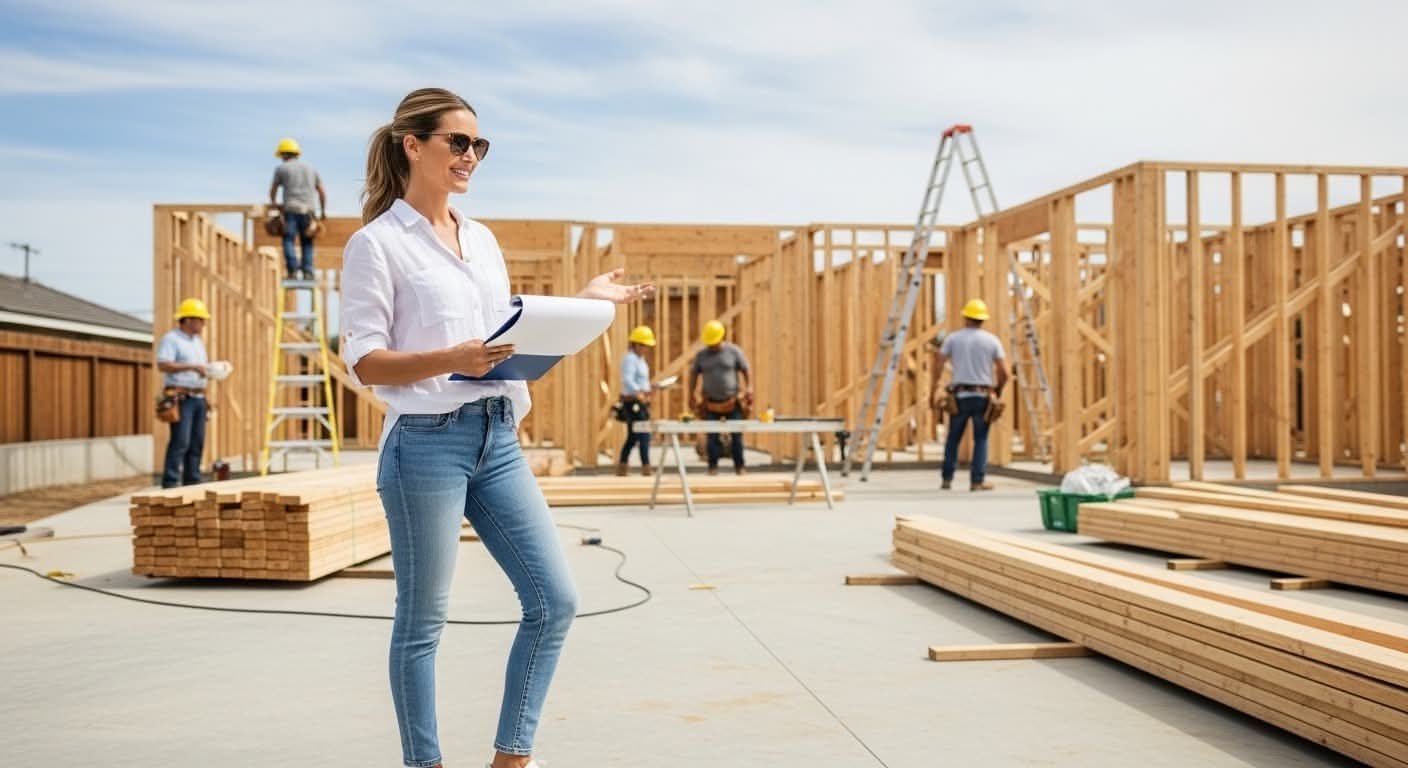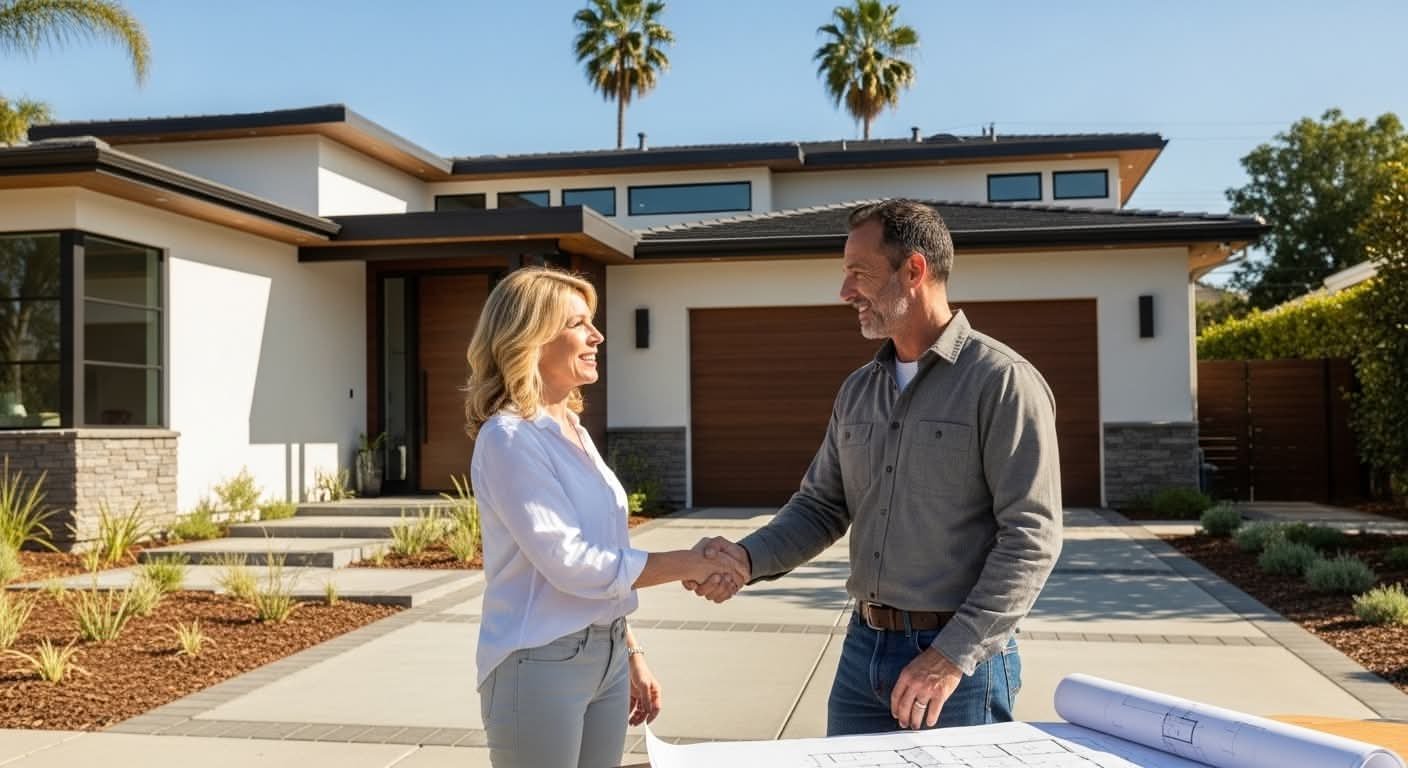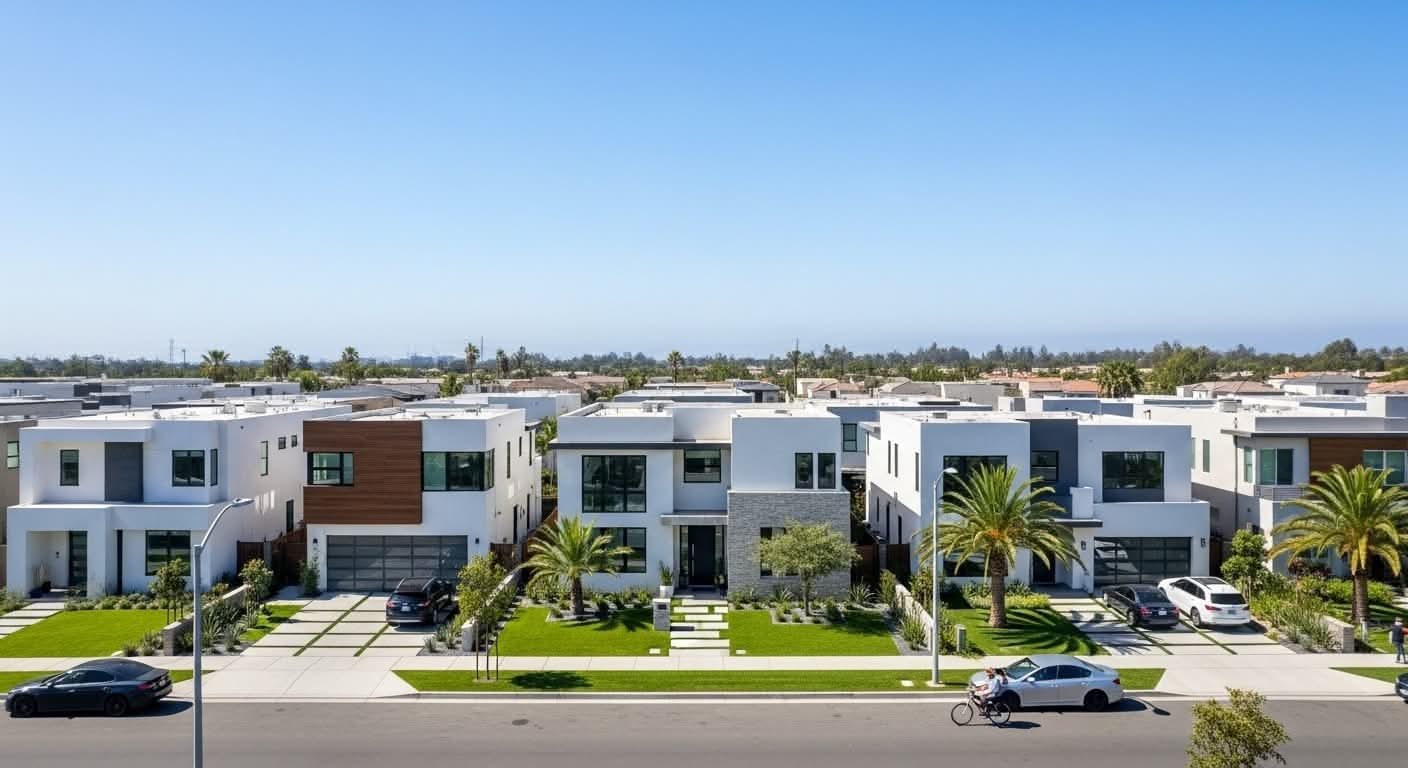
10 Essential Steps to Building a Home in Orange County, California (A Complete Guide for Homeowners)
Building a home in Orange County is one of the most significant investments you’ll make, requiring careful planning and expert guidance. This comprehensive guide covers all the essential steps for successfully building a home in Orange County, combining professional insight with local expertise to ensure your construction project flows smoothly and efficiently from planning to completion.
Orange County’s unique building environment presents both opportunities and challenges for homeowners. From navigating local building codes to selecting materials that withstand California’s climate, every decision impacts your project’s success. Whether you’re building your dream home in Newport Beach, Irvine, or any other Orange County community, understanding these essential steps will help you make informed decisions and avoid costly mistakes.
Essential Steps for Building a Home in Orange County
Step 1: Define Your Home Goals & Budget
Clarify your family’s needs, lifestyle, and future plans. Set a clear budget, including a contingency fund for unexpected costs.
Step 2: Choose the Right Location
Research neighborhoods, school ratings, safety, amenities, and proximity to work or transport. Verify zoning laws and check property legal documents.
Step 3: Hire an Architect and Design Team
Work with local professionals who understand Orange County codes and climate. Prioritize clear communication and design flexibility.
Step 4: Collaborate on Design Concepts
Discuss layout, style, functionality, and features that fit your life. Ensure proper ventilation, lighting, and maximize usable space.
Step 5: Secure Permits & Handle Legalities
Submit all required plans and paperwork to local authorities. Comply with building codes, safety, and HOA guidelines.
Step 6: Select a Trusted General Contractor
Ask for references, review past projects, check licenses and insurance. Establish clear contracts on milestones, payment, and quality standards.
Step 7: Pick Sustainable, Local Materials
Choose eco-friendly materials that handle California weather: insulation, roofing, windows, and finishes that improve comfort and efficiency.
Step 8: Monitor Construction Progress
Stay in touch with regular site visits or digital updates. Address any issues early and document all changes for transparency.
Step 9: Inspect and Approve Each Stage
Check quality at every key phase—foundation, framing, electrical, plumbing, finishing. Bring in independent inspectors if needed.
Step 10: Plan for Long-Term Maintenance
Schedule regular inspections, cleaning, and system checks to keep your home in top condition. Invest in warranties for key elements.
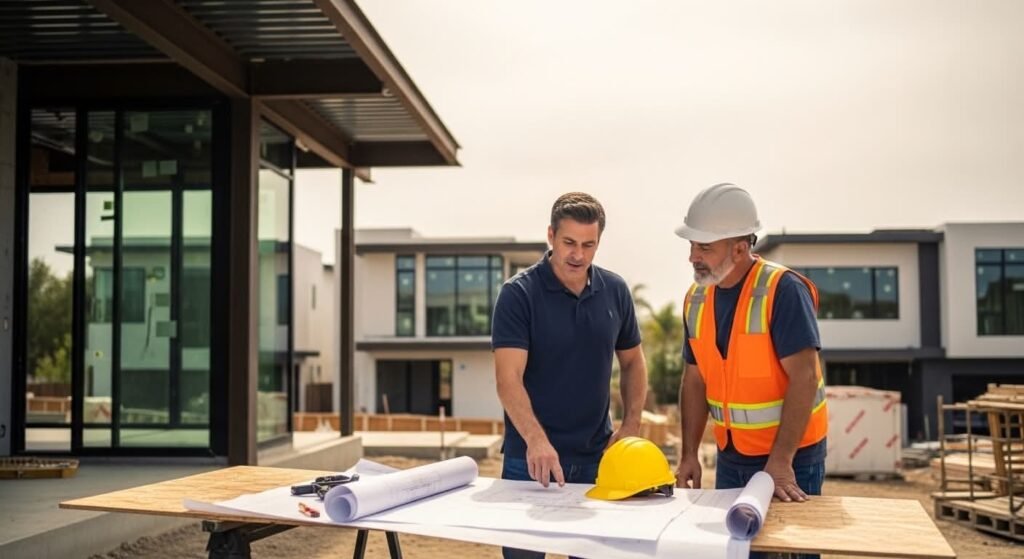
Conclusion
Successfully building a home in Orange County requires meticulous planning, clear communication, and professional support throughout every phase. By following these ten essential steps, homeowners can navigate the complex process of building a home in Orange County with confidence and create a lasting, valuable living space that meets their family’s needs for years to come.
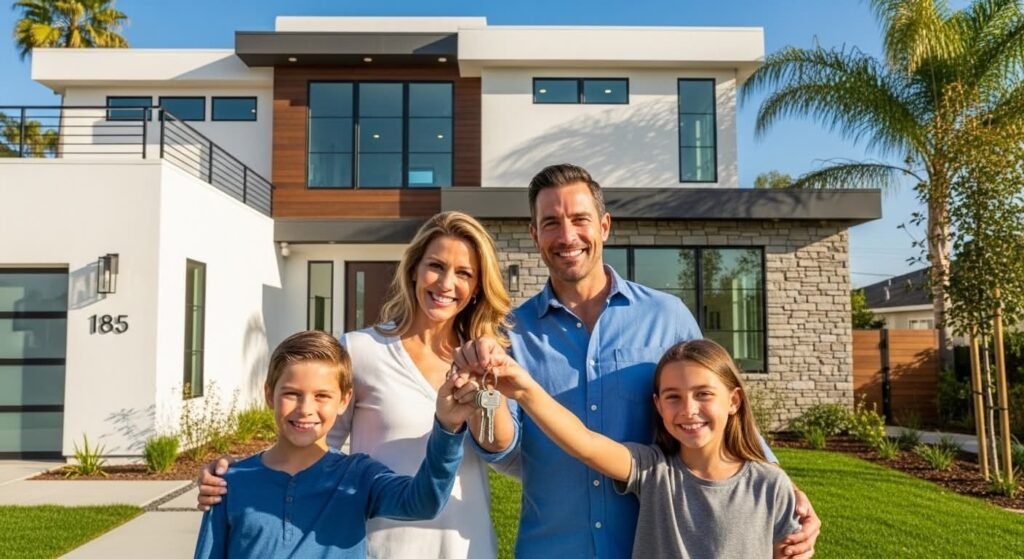
FAQ
What are the key permits required when building a home in Orange County?
Key permits typically include building permits, electrical permits, plumbing permits, mechanical permits, and any specialized environmental or neighborhood approvals. It’s essential to work with local authorities and experienced contractors familiar with Orange County regulations to ensure all required permits are obtained before beginning construction.
How long does it typically take to build a home in Orange County?
The typical timeline for building a home in Orange County ranges from 8 to 12 months, depending on factors such as design complexity, permit approval time, weather conditions, and contractor availability. More intricate custom homes may require 12-18 months for completion.
What are the most important factors to consider when selecting sustainable materials for building in Orange County?
When selecting sustainable materials for building in Orange County, consider climate-resistant properties, energy efficiency, local sourcing, and long-term durability. Materials like high-performance insulation, energy-efficient windows, sustainable roofing materials, and environmentally-friendly finishes that can withstand California’s weather conditions while reducing environmental impact and improving comfort.


